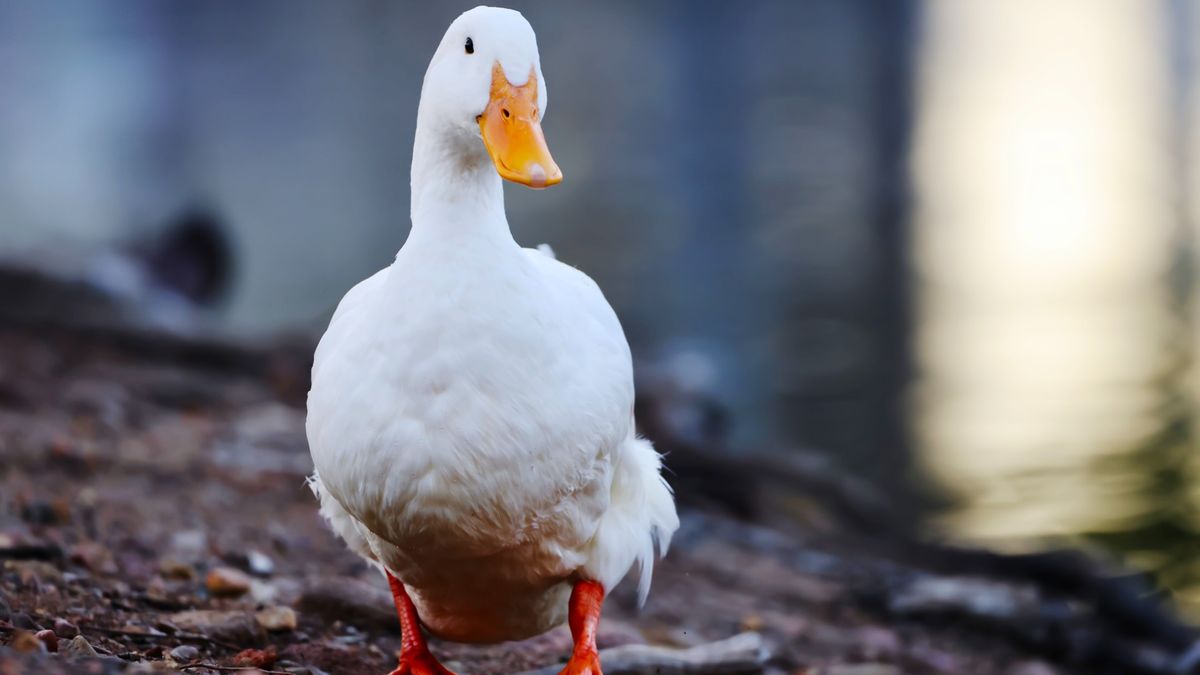A strain of bird flu never seen before in the United States has been detected among poultry at a California farm.
The virus, called highly pathogenic H5N9, is a type of avian influenza, otherwise known as “bird flu.” This is not the same type of bird flu that’s already been spreading on dairy cow and poultry farms in the U.S., causing at least several dozen infections in humans. That virus is called H5N1.
So what is H5N9? How does it differ from H5N1, and should we be equally concerned about it?
Related: Bird flu strikes 1st child in the US — CDC says infection source unknown
What is H5N9?
H5N9 is a highly pathogenic avian flu (or bird flu) virus that bears some structural similarities to H5N1.
“Low pathogenic” H5N9 viruses have previously been detected in birds in the U.S. and elsewhere in the world, dating back to the 1960s. However, these infections are usually associated with less-severe symptoms than “highly pathogenic” strains are. This is the first time highly pathogenic H5N9 has been seen in the U.S., and these deadlier strains are also fairly uncommon worldwide.
How did H5N9 emerge?
New subtypes and strains of influenza can emerge if viruses pick up random genetic mutations as they multiply, as well as if multiple viruses swap genetic information with one another. This latter process is known as genetic reassortment, and it usually happens when an organism is infected with at least two different viruses at the same time.
Some experts suspect that H5N9 may have emerged among the ducks in California due to genetic reassortment occurring between circulating H5N1 viruses and other flu viruses containing the N9 protein. (“H5” and “N9” are two proteins found on the surface of the virus that give the bird flu subtype its name.)
H5N1 was also detected in the birds at the farm, so this could be plausible, according to a Jan. 24 report from the World Organisation for Animal Health (WOAH), which monitors disease outbreaks in animals worldwide.
Such reassortment can lead to “unpredictable new viruses,” Angela Rasmussen, a virologist at the University of Saskatchewan in Canada, wrote on X.
She added that ducks may be great host animals for genetic reassortment to take place because, unlike chickens, they don’t get very sick from many avian flu viruses. Therefore, while an infected chicken would quickly die, ducks can survive and continue to spread the disease to new hosts.
Related: How to avoid bird flu
What’s happening at the farm where H5N9 was detected?
In the Jan. 24 report, the WOAH announced that H5N9 had been identified at a duck farm in Merced County, California. The current outbreak, which the report says was confirmed on Jan. 13, is being closely monitored by officials.
“The USDA Animal and Plant Health Inspection Service (APHIS), in conjunction with State Animal Health and Wildlife Officials, are conducting comprehensive epidemiological investigations and enhanced surveillance in response to the HPAI [highly pathogenic avian influenza] related events,” the WOAH wrote in the report.
To prevent further spread of the infection, all of the nearly 119,000 birds at the farm have now been culled. These bird flu viruses are known as “highly pathogenic” because they are extremely deadly to certain poultry — like chickens — and culling an exposed flock is typically considered the best way of preventing additional flocks from getting sick.
Why is bird flu concerning?
Scientists have recently expressed increasing concern that a strain of bird flu could mutate into a form that easily spreads among humans, sparking a pandemic. This happened during historic pandemics, such as the “Spanish flu” in 1918 and the “Asian flu” in 1957.
Humans can become infected with avian influenza if the virus gets into their eyes, nose or mouth, or if it is inhaled in the form of droplets in the air. However, not all bird flu viruses are equipped to efficiently infect people and then spread between them. When given more chances to spread to new animals, the viruses have a higher chance of picking up that ability and harming humans.
Notably, over the past couple of years, H5N1 has spread to new countries, including the U.S. It’s been widely infecting wild birds and poultry and has also jumped into various mammals, including cattle and domestic cats. Since its discovery, H5N1 has infected more than 900 people globally, and in the past year, at least 67 people in the U.S. have been infected. In December 2024, a woman in Louisiana became the first person in the U.S. to die as a result of an H5N1 infection.
Related: Bird flu could become deadlier if it mixes with seasonal flu viruses, experts warn

How does H5N9 differ from H5N1?
Avian influenza viruses come in different subtypes, which are named according to subtle variations in the structure of two key proteins on the surface of the virus: hemagglutinin (H) and neuraminidase (N). So H5N9 and H5N1 have the same hemagglutinin protein, but a different neuraminidase protein.
A virus’s specific combination of H and N proteins determines a range of important traits, such as how good it is at spreading from one animal to another, how deadly it is, and whether it is resistant to antiviral treatment.
Besides the difference in their neuraminidase proteins, H5N9 differs from H5N1 in several other ways.
For example, H5N1 infections are more common among humans and are believed to be the deadliest of all the highly pathogenic avian influenza strains in humans and chickens.
Does H5N9 pose a risk to humans?
As of yet, little is known about whether H5N9 could spread to humans and potentially cause a pandemic.
On its website, the Centers for Disease Control and Prevention (CDC) currently states that the public health risk from H5 bird flu is “low” but that the agency is “watching the situation carefully and working with states to monitor people with animal exposures.” The CDC’s primary focus on that webpage is H5N1, but the agency is monitoring H5 viruses broadly, using its flu surveillance systems to watch for any cases in humans.
As of Jan. 18, there has been no evidence of H5 bird flu spreading from one human to another in the U.S.
“The combination H5N9 is not new and other versions, like H5N5 also exist,” Florian Krammer, a professor of vaccinology at the Icahn School of Medicine at Mount Sinai in New York, told CBS News. “Just because this was now detected, doesn’t mean trouble necessarily,” he emphasized.
This article is for informational purposes only and is not meant to offer medical advice.


